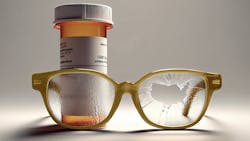In January of 1848, a carpenter by the name of James Marshall was busy building a water-powered sawmill in the American River at the foothills of the Sierra Nevada Mountains when he noticed flakes of gold in the water. He and his boss, John Sutter, did a spectacularly bad job of keeping the news under wraps, because before long, a storekeeper was running through the streets of San Francisco screaming about gold, and major news outlets had gotten wind of the situation.
In the year that followed, hundreds of thousands of people began hitching their wagons to dreams of prosperity and heading west.
While the promise of frontier life had been ingrained in American culture for decades, the timing of Marshall’s striking discovery proved pivotal.
The 1840s saw Americans crawling out from under a depression that had been ignited by financial panic during the previous decade. Much of the country’s middle class held factory jobs, where the working conditions and morale were poor. Unemployment had risen, wages had dropped. Land prices were surging, making land ownership for many Americans impossible — a problem that was especially difficult to swallow at a time when 'independence’ was closely linked to possessing property.
When the gold rush hit, people flocked to California in hopes that gold would be the answer to all their problems. (Spoiler: While a handful of prospectors did end up rich; far more ended up dead.) In short, Americans found themselves in a bad place and were offered a shiny solution — and they dug in.
In a similar way, the stage was set for pharma’s westward return when the global pandemic laid bare the country’s worrisome overreliance on China for medical supplies. In the background, the industry continued to struggle with drug shortages and quality issues. Cue the calls to ‘bring manufacturing home.’ Add to that favorable legislation and billions of dollars in government incentives…and you have yourself a reshoring rush.
Sparked by the pandemic, the U.S. government’s investments into generic drugs and ingredients have created an air of excitement surrounding repatriation. Now, with the urgency of the pandemic behind us, the U.S. has the chance to candidly assess pharma’s reshoring progress — and create a more structured plan for supply chain resilience. While there have been numerous articles justifying the need to repatriate the pharma supply chain, this month’s cover story focuses on how we can make domestic manufacturing sustainable for the long haul.
It has become clear that reshoring isn’t a cure-all for pharma’s supply chain problems. But if the groundswell of government support can be properly channeled and upheld, a stronger domestic manufacturing base offers a golden opportunity to better position the country in the event of future supply chain shocks.
And for the pharma supply chain, true wealth will not come in the mass movement west, but rather in the government’s commitment to keep mining until a valuable solution pans out.
About the Author
Karen P. Langhauser
Chief Content Director, Pharma Manufacturing
Karen currently serves as Pharma Manufacturing's chief content director.
Now having dedicated her entire career to b2b journalism, Karen got her start writing for Food Manufacturing magazine. She made the decision to trade food for drugs in 2013, when she joined Putman Media as the digital content manager for Pharma Manufacturing, later taking the helm on the brand in 2016.
As an award-winning journalist with 20+ years experience writing in the manufacturing space, Karen passionately believes that b2b content does not have to suck. As the content director, her ongoing mission has been to keep Pharma Manufacturing's editorial look, tone and content fresh and accessible.
Karen graduated with honors from Bucknell University, where she majored in English and played Division 1 softball for the Bison. Happily living in NJ's famed Asbury Park, Karen is a retired Garden State Rollergirl, known to the roller derby community as the 'Predator-in-Chief.'
